-
 Bitcoin
Bitcoin $83,309.8774
-1.88% -
 Ethereum
Ethereum $1,591.3660
-2.42% -
 Tether USDt
Tether USDt $0.9998
-0.01% -
 XRP
XRP $2.0864
-2.28% -
 BNB
BNB $580.9809
-0.68% -
 Solana
Solana $125.6682
-3.01% -
 USDC
USDC $0.9999
0.00% -
 TRON
TRON $0.2516
0.03% -
 Dogecoin
Dogecoin $0.1542
-3.08% -
 Cardano
Cardano $0.6142
-3.69% -
 UNUS SED LEO
UNUS SED LEO $9.3431
-0.92% -
 Chainlink
Chainlink $12.3641
-2.37% -
 Avalanche
Avalanche $18.8865
-5.31% -
 Stellar
Stellar $0.2358
-2.40% -
 Toncoin
Toncoin $2.8805
-0.91% -
 Shiba Inu
Shiba Inu $0.0...01169
-1.89% -
 Sui
Sui $2.1008
-4.00% -
 Hedera
Hedera $0.1574
-5.48% -
 Bitcoin Cash
Bitcoin Cash $318.9019
-1.04% -
 Litecoin
Litecoin $75.9077
-2.52% -
 Polkadot
Polkadot $3.5432
-3.69% -
 Dai
Dai $1.0000
0.00% -
 Bitget Token
Bitget Token $4.2538
-1.47% -
 Hyperliquid
Hyperliquid $15.1227
-5.40% -
 Ethena USDe
Ethena USDe $0.9991
0.00% -
 Pi
Pi $0.6199
-16.77% -
 Monero
Monero $217.3319
2.19% -
 Uniswap
Uniswap $5.2227
-2.58% -
 OKB
OKB $52.2436
1.28% -
 Pepe
Pepe $0.0...07082
-3.62%
What is the role of DAG files in Ethereum mining?
The DAG file, crucial for Ethereum's Ethash algorithm, grows every 5 days, requiring miners to update and ensure sufficient memory to maintain mining efficiency.
Apr 11, 2025 at 04:15 am
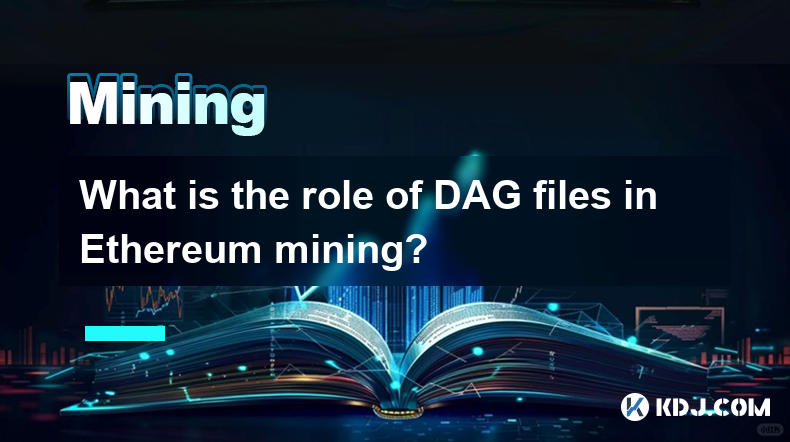
Introduction to DAG Files in Ethereum Mining
Ethereum mining is a crucial process that involves solving complex mathematical problems to validate transactions and add them to the blockchain. A key component in this process is the DAG (Directed Acyclic Graph) file. The DAG file plays a pivotal role in Ethereum's mining algorithm, specifically in the Ethash proof-of-work (PoW) consensus mechanism. Understanding the role of DAG files is essential for anyone involved in Ethereum mining, as it directly impacts the efficiency and performance of the mining operation.
What is a DAG File?
A DAG file is a large dataset used by the Ethash algorithm to ensure the security and decentralization of the Ethereum network. The DAG file is essentially a cache of data that miners need to access during the mining process. It is generated and updated periodically, with a new DAG file being created approximately every 30,000 blocks, which is roughly every 5 days. The size of the DAG file grows over time, starting at around 1 GB and increasing incrementally.
The Function of DAG Files in Ethash
The Ethash algorithm uses the DAG file to create a memory-hard proof-of-work system. This means that the mining process requires a significant amount of memory, making it more resistant to ASIC (Application-Specific Integrated Circuit) miners, which are specialized hardware designed for mining. The DAG file is used to generate a unique dataset for each block, which miners must process to find a valid solution. This process involves accessing the DAG file to retrieve specific data, which is then used in the mining calculations.
How DAG Files Impact Mining Performance
The size and complexity of the DAG file directly affect the performance of Ethereum mining. As the DAG file grows, it requires more memory to store and access, which can impact the efficiency of the mining operation. Miners need to ensure that their hardware has sufficient memory to handle the increasing size of the DAG file. Additionally, the time it takes to generate and load the new DAG file can cause temporary disruptions in mining, as miners need to pause their operations to update their systems.
Steps to Manage DAG Files in Ethereum Mining
Managing DAG files effectively is crucial for maintaining optimal mining performance. Here are the steps involved in managing DAG files:
Check Hardware Compatibility: Ensure that your mining hardware has enough memory to handle the current and future sizes of the DAG file. A minimum of 4 GB of GPU memory is recommended, but as the DAG file grows, more memory may be required.
Monitor DAG File Updates: Keep track of when the DAG file is scheduled to update. This information can be found on Ethereum block explorers or through mining software notifications.
Prepare for Updates: Before the DAG file update, ensure that your mining software is up to date and that you have enough storage space to accommodate the new file. It's also a good idea to have a backup of your current DAG file in case of any issues during the update process.
Update the DAG File: When the update time arrives, your mining software will automatically start generating the new DAG file. This process can take several minutes, during which your mining operations will be paused. Once the new DAG file is generated and loaded, mining can resume.
Optimize Mining Performance: After the DAG file update, monitor your mining performance to ensure that it has not been negatively impacted. Adjust your mining settings if necessary to optimize performance with the new DAG file.
Troubleshooting Common DAG File Issues
Miners may encounter several issues related to DAG files, and knowing how to troubleshoot these problems is essential. Here are some common issues and their solutions:
Insufficient Memory: If your mining hardware does not have enough memory to handle the DAG file, you may experience errors or crashes. The solution is to upgrade your hardware to a GPU with more memory or reduce the number of mining threads to lower the memory requirement.
Slow DAG File Generation: If the process of generating the new DAG file is taking too long, it could be due to slow storage or insufficient processing power. Using faster storage, such as an SSD, and ensuring that your CPU is not overloaded can help speed up the process.
Corrupted DAG File: In some cases, the DAG file may become corrupted, leading to mining errors. If this happens, delete the corrupted file and restart the mining software to generate a new DAG file.
Network Issues: If you are mining on a pool, network issues can prevent the timely update of the DAG file. Ensure that your internet connection is stable and that you are connected to a reliable mining pool.
The Importance of DAG Files in Ethereum's Security
The DAG file is not only crucial for the mining process but also plays a significant role in maintaining the security of the Ethereum network. By requiring miners to access and process a large dataset, the Ethash algorithm ensures that mining remains decentralized and resistant to centralization by ASIC miners. This helps to prevent a small group of miners from dominating the network, which could lead to security vulnerabilities and potential attacks.
Frequently Asked Questions
Q: Can I mine Ethereum without a DAG file?
A: No, the DAG file is an essential component of the Ethash algorithm used in Ethereum mining. Without it, miners cannot generate the necessary data to solve the proof-of-work problem and validate transactions.
Q: How often does the DAG file need to be updated?
A: The DAG file is updated approximately every 30,000 blocks, which is roughly every 5 days. Miners need to pause their operations during this update to generate and load the new file.
Q: What happens if I fail to update the DAG file on time?
A: If you fail to update the DAG file on time, your mining operations will be interrupted, and you will not be able to mine new blocks until the update is complete. It's important to monitor DAG file updates and prepare for them in advance.
Q: Can the size of the DAG file be reduced to improve mining efficiency?
A: The size of the DAG file is determined by the Ethash algorithm and cannot be reduced without compromising the security and decentralization of the Ethereum network. Miners must adapt to the growing size of the DAG file by ensuring their hardware has sufficient memory.
Disclaimer:info@kdj.com
The information provided is not trading advice. kdj.com does not assume any responsibility for any investments made based on the information provided in this article. Cryptocurrencies are highly volatile and it is highly recommended that you invest with caution after thorough research!
If you believe that the content used on this website infringes your copyright, please contact us immediately (info@kdj.com) and we will delete it promptly.
- Movement Labs and the Movement Network Foundation have launched an independent investigation into recent market-making irregularities related to the MOVE token.
- 2025-04-16 09:15:12
- Shiba Inu (SHIB) burn rate saw an over 2000% hike, leading to the removal of 20.83 million tokens from circulation.
- 2025-04-16 09:15:12
- Securitize Acquires MG Stover's Fund Administration Business to Become the Largest Digital Asset Fund Administrator
- 2025-04-16 09:10:12
- Trump administration plans to present Congress with cuts to most funding for public media
- 2025-04-16 09:10:12
- XRP (XRP) Displays Promising Growth Potential as It Currently Trades Above $2.00 and the 21-week EMA
- 2025-04-16 09:05:13
- BYDFi Lists $KERNEL, the Governance Token of KernelDAO, with Spot Trading Now Live
- 2025-04-16 09:05:13
Related knowledge
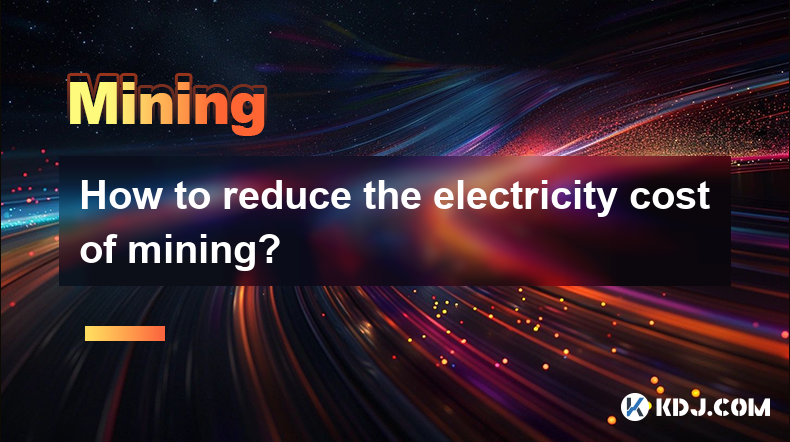
How to reduce the electricity cost of mining?
Apr 16,2025 at 08:42am
Mining cryptocurrencies, particularly Bitcoin, is an energy-intensive process that can lead to significant electricity costs. However, there are several strategies that miners can employ to reduce these expenses and make their operations more cost-effective. In this article, we will explore various methods to minimize the electricity cost of mining. Cho...
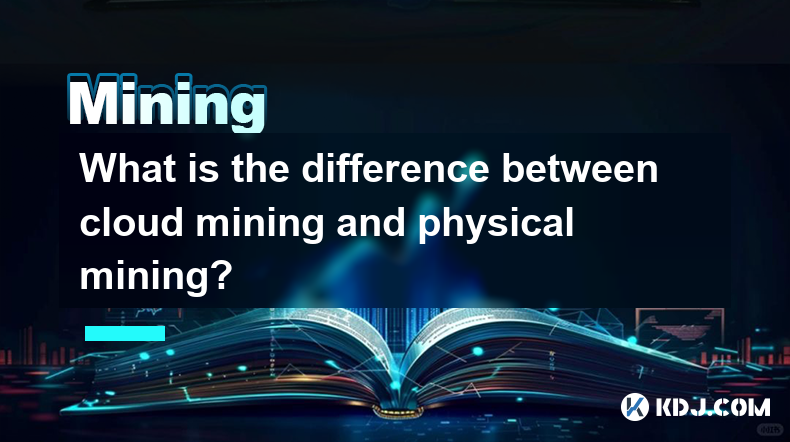
What is the difference between cloud mining and physical mining?
Apr 16,2025 at 01:49am
What is the difference between cloud mining and physical mining? In the world of cryptocurrencies, mining is the process by which new coins are generated and transactions are verified and added to the blockchain. There are two primary methods of mining: cloud mining and physical mining. Understanding the differences between these two approaches can help...
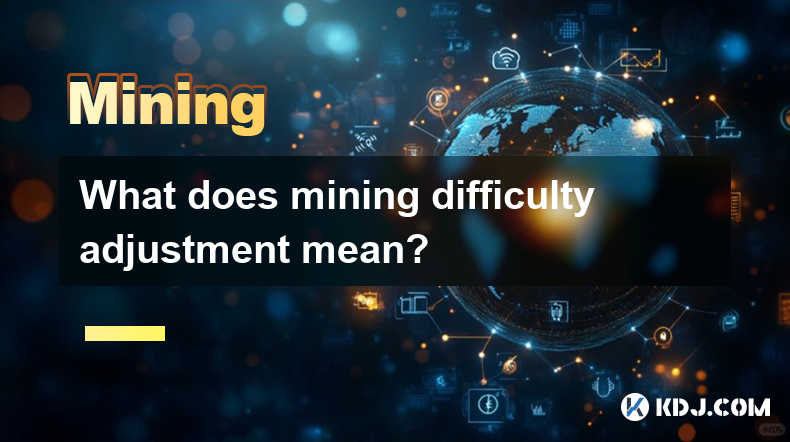
What does mining difficulty adjustment mean?
Apr 16,2025 at 12:42am
What does mining difficulty adjustment mean? Mining difficulty adjustment is a crucial mechanism in blockchain networks, particularly in Proof of Work (PoW) systems like Bitcoin. It ensures that the rate at which new blocks are added to the blockchain remains consistent, despite fluctuations in the total computational power (hash rate) of the network. T...
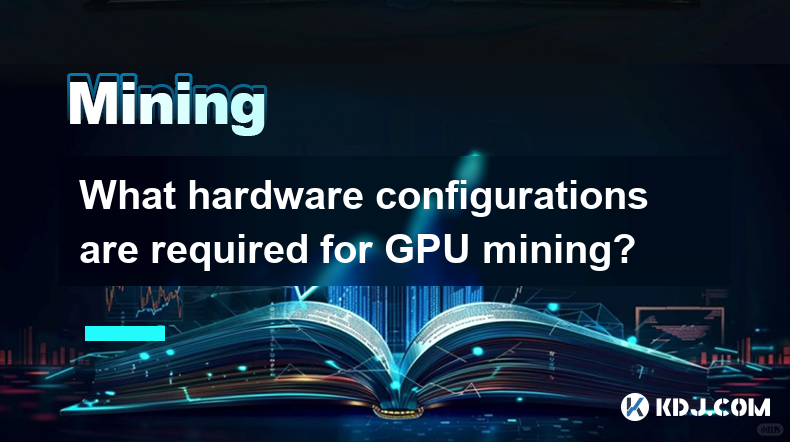
What hardware configurations are required for GPU mining?
Apr 16,2025 at 09:21am
GPU mining has become a popular method for cryptocurrency enthusiasts to mine various cryptocurrencies, such as Ethereum, Ravencoin, and others. To successfully engage in GPU mining, it is essential to understand the hardware configurations required to maximize efficiency and profitability. This article will delve into the specifics of what you need to ...
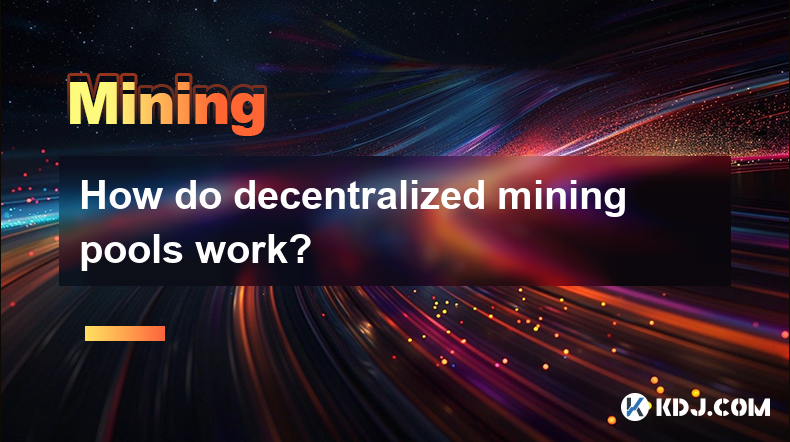
How do decentralized mining pools work?
Apr 16,2025 at 05:42am
Decentralized mining pools represent a significant evolution in the world of cryptocurrency mining, offering a more democratic and transparent approach compared to traditional centralized pools. In this article, we will explore the mechanics of decentralized mining pools, their benefits, and how they operate within the cryptocurrency ecosystem. What are...
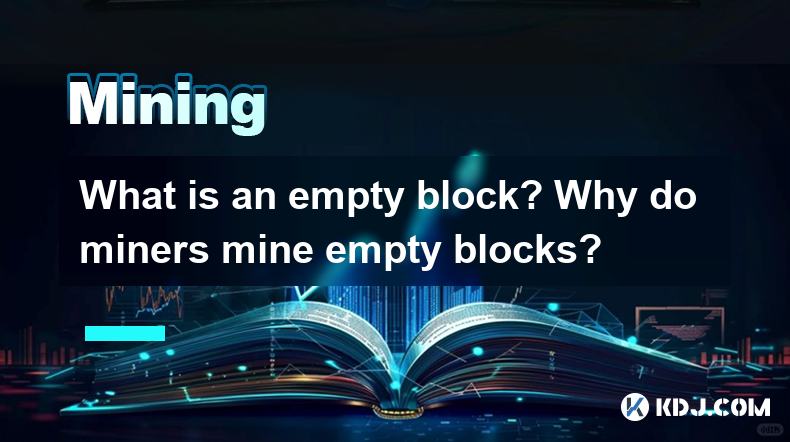
What is an empty block? Why do miners mine empty blocks?
Apr 16,2025 at 01:28am
What is an Empty Block?An empty block in the context of blockchain technology, particularly in cryptocurrencies like Bitcoin, refers to a block that contains no transactions other than the coinbase transaction. The coinbase transaction is a special transaction in which new bitcoins are generated and awarded to the miner who successfully mines the block....

How to reduce the electricity cost of mining?
Apr 16,2025 at 08:42am
Mining cryptocurrencies, particularly Bitcoin, is an energy-intensive process that can lead to significant electricity costs. However, there are several strategies that miners can employ to reduce these expenses and make their operations more cost-effective. In this article, we will explore various methods to minimize the electricity cost of mining. Cho...

What is the difference between cloud mining and physical mining?
Apr 16,2025 at 01:49am
What is the difference between cloud mining and physical mining? In the world of cryptocurrencies, mining is the process by which new coins are generated and transactions are verified and added to the blockchain. There are two primary methods of mining: cloud mining and physical mining. Understanding the differences between these two approaches can help...

What does mining difficulty adjustment mean?
Apr 16,2025 at 12:42am
What does mining difficulty adjustment mean? Mining difficulty adjustment is a crucial mechanism in blockchain networks, particularly in Proof of Work (PoW) systems like Bitcoin. It ensures that the rate at which new blocks are added to the blockchain remains consistent, despite fluctuations in the total computational power (hash rate) of the network. T...

What hardware configurations are required for GPU mining?
Apr 16,2025 at 09:21am
GPU mining has become a popular method for cryptocurrency enthusiasts to mine various cryptocurrencies, such as Ethereum, Ravencoin, and others. To successfully engage in GPU mining, it is essential to understand the hardware configurations required to maximize efficiency and profitability. This article will delve into the specifics of what you need to ...

How do decentralized mining pools work?
Apr 16,2025 at 05:42am
Decentralized mining pools represent a significant evolution in the world of cryptocurrency mining, offering a more democratic and transparent approach compared to traditional centralized pools. In this article, we will explore the mechanics of decentralized mining pools, their benefits, and how they operate within the cryptocurrency ecosystem. What are...

What is an empty block? Why do miners mine empty blocks?
Apr 16,2025 at 01:28am
What is an Empty Block?An empty block in the context of blockchain technology, particularly in cryptocurrencies like Bitcoin, refers to a block that contains no transactions other than the coinbase transaction. The coinbase transaction is a special transaction in which new bitcoins are generated and awarded to the miner who successfully mines the block....
See all articles























































































